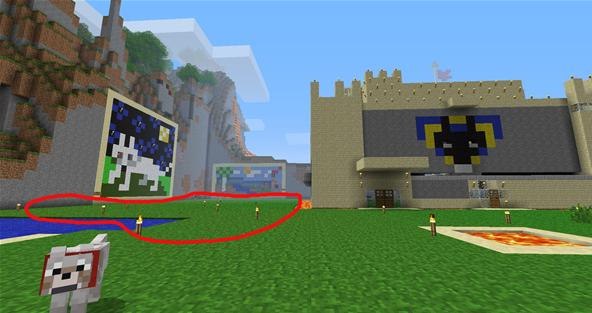Everyone loves Minecraft.
Okay, so that’s a sweeping and obviously untrue generalization, but sometimes it feels like everyone loves Minecraft. But why? What has fueled this phenomenon? Why does it appear to cater to such a gigantic audience and demographic? Age, platform preference, gaming styles; it all melts away when it comes to this uber-popular game. Somehow, the legend just keeps growing.
The PS3 version of Minecraft was the system’s best-selling downloadable game in December, easily outstripping massive blockbusters like Grand Theft Auto V and Call of Duty: Ghosts. Of course, such games are available in physical format and the majority of their sales are generated by disc sales, but still, Minecraft sitting atop the digital sales charts for the PS3 last month is impressive.
Don’t forget that the game sold over 13 million copies on PC, another 10 million units on Xbox 360, and even the Pocket Edition moved another 10 million copies. I mean, these are ridiculous numbers.

So, what is it? What’s in the Kool-Aid?
Seems that anyone who drinks it is hooked. I’m not going to be insulting and call out Minecraft for being addictive and detrimental to people’s lives; that’s an unnecessary argument for this piece. The point is that a lot of people love the game in question, and it continues to appeal to millions. From a distance, one looks at this phenomenon and goes: “Why?”
The question is a valid one coming from those not in-the-know. On the surface, Minecraft is a game that shouldn’t make any waves at all. What, 8-bit graphics? A big ol’ world with a gazillion variations of blocks? Combat is basically a joke; it can’t be about that. Can it really be just about creating stuff? Given the amount of time necessary to really push the boundaries of building, it seems all the more restrictive. Plus, given the current trends in the industry – everyone loves the shooting and action, as evidenced by sales numbers – how on earth could such a thing be popular?
In many ways, it defies logic.
However, if you start to think about it, you begin to unravel the mystery. People aren’t playing it for nostalgia purposes because in fact, aside from the visuals, there’s nothing “old-fashioned” about Minecraft. It also proves that in some cases, graphics are absolutely unnecessary. This is micromanagement at its finest; it’s patience and diligence paying off; it’s a long-term goal that can only be met by adopting admirable traits. Stick-to-it-iveness, determination, creativity, and even research play a big role. And surprisingly enough, this really resonates with a lot of gamers.
A refreshing, captivating reprieve

I’m not a fan of the game. I’m one of those who are immune to its immersive charms. That being said, given my proclivity toward complex games that require patience, creativity and strategy, I certainly understand the fascination. As I said above, most titles that sell ridiculously well tend to fall into only a few categories; action, FPS and in rare cases (The Elder Scrolls, for instance), role-playing. The latter is closest to Minecraft but even then, there’s still a big gap between the genres and styles.
Essentially, it appears Minecraft is a refreshing reprieve from the established norm. The latter gets tiresome at some point. Furthermore, being inundated with games that are all about incessant action and nonstop stimuli, the brain demands a break. We can’t always be running around like madmen, can we? Minecraft appeals to our slower, cerebral side, which thankfully hasn’t eroded entirely in gamers. Granted, to some, it may seem mind-numbingly boring. But to others, it’s wildly immersive. My guess is that it’s also calming and relaxing.
On top of which, I will always maintain that gamers tend to have more creativity and wider imaginations than most, and Minecraft takes advantage of that. Have you seen some of the constructs fans have built? Amazing stuff. So, looking at it from one angle, it’s hard to understand this worldwide phenomenon; from another angle, though, it actually makes perfect sense.






Published: Jan 9, 2014 10:51 am